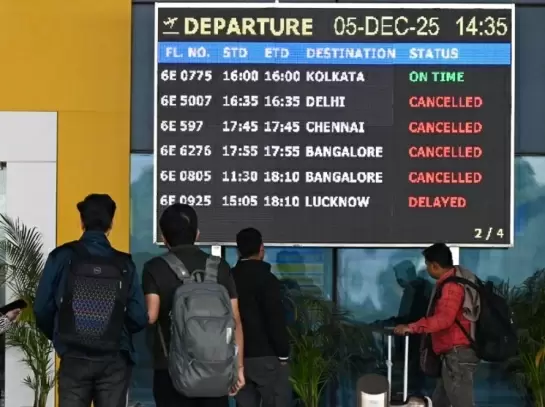India's poor need more purchasing power, not doles
20-June-2013
The welfare subsidies, if one recaps, were introduced by the European rulers following the French revolution to entice their subjects.
Such welfare subsidies did not adversely affect the overall economy since there had been easy flow of capital - predominately generated from the captive markets of their colonies spread over the world.
Similarly, in the US, following the anti-apartheid movement, social sector schemes were mooted to appease its socially backward communities, largely black habitants.
After the Second World War, the decolonisation process gradually set in and, with the passage of time, European colonies waned.
Thus, they not only lost their captive markets but also easy access to cheaper inputs like labour and materials from their erstwhile colonies.
Following globalisation-cum-opening of the global markets, stiffer competition was being faced by these countries, especially with consumer products.
With the shifting scenario it became necessary for most of these nations to revisit their welfare policies, especially to prune the unsustainable social development programmes.
In contrast, India is increasingly overburdening its economy with unsustainable welfare schemes, especially using them as a political tool for gaining election mileage.
Welfare schemes were rooted in India during the post-Independence era in the initial plan periods. But the core socio-economic objectives progressively got distorted into politically-motivated apparatuses, especially with the hurling of the 'Garibi Hatao (Remove Poverty) Scheme'.
Following governments continued with such slogan-oriented social development programmes primarily wooing the voters as a part of competitive vote-bank politics.
While most of these social sector schemes have attracted severe criticism for their repeated failure to deliver the contemplated benefits to the targeted groups, a grandiose welfare scheme named as the National Food Security Bill is proposed to secure food for two-thirds of our population.
The proposed programme is to provide 5 kg of subsidised foodgrain per person per month, which would cost the exchequer around Rs.124,747 crore ($21 billion) in the very first year.
This scheme has raised several doubts amongst notable economists and professionals, both in the country and abroad, about the rightness of spending such a huge amount out of the exchequer, especially at a time when the country's economy is at its lower ebb.
India's growth trajectory is at present shaky due to increasing gaps between the government's annual revenue income and expenditure.
India's present growth reversal has raised several doubts on the viability of such policy initiatives of the government.
According to Deepak Lal, James S. Coleman Professor Emeritus of International Development Studies at the University of California at Los Angeles, the growth rate has slipped in India due to the diminishing tax revenues but enlarged spending, especially on politically-motivated unsustainable welfare schemes.
According to Lal, the "trickle-down" from rapid growth cannot redress India's poverty; it showed a shocking failure to recognise the outcome of the recent period of rapid growth in reducing poverty in India.
Ashok Gulati, chairman, Commission for Agricultural Costs and Prices in India's agriculture ministry, in a recent interview stated that the country has largely followed a 'price policy approach' to achieve essentially what are the equity ends.
It has subsidized food and agricultural inputs so that poor consumers and small farmers can have economic access to these. But the ground evidence suggests that this may not be the best way to achieve equity objectives.
It has led to major distortions in markets besides high costs in handling foodgrain over and above diversions to non-targeted groups. These have resulted in large 'efficiency losses' without achieving commensurate results on the equity front.
Literature on best practices around the world too showed that 'income policy approach' rather than 'price policy approach' is more efficient in achieving equity ends and this has been successfully adopted by many countries across the world.
Specific criticism of subsidy schemes are particularly open to corruption and mismanagement, besides posing a heavy burden on government budgets.
It has been amply proved that poverty and food insecurity exist for want of access to education, healthcare and, most significantly, gainful employment.
This very 'income policy approach' in achieving equity has already been very skilfully demonstrated in India with the success of the well-known 'Anand Model' of dairy development. It is, therefore, more prudent to revisit this model, especially in the present context of the proposed food security scheme.
While dwelling on the food security scheme vis-a-vis the 'Anand Model', it would be worthwhile to spool back the erstwhile food aid programme of the UN.
The objectives underpinned in the programme were, to a certain extent, similar to those proposed in the food security scheme of India.
The UN programme was contemplated to provide food security to the third world nations by distributing the accumulated surplus food commodities in the developed countries.
This programme, however, came under severe criticism for its misapplications, besides using food aid as a tool for expansion of the commodity trade in the third world markets by the donor nations!
Most of the third world nations were hemmed into food aid dependency. India, in contrast, succeeded in monetising the commodity aid to enhance indigenous growth-cum-self-sufficiency.
The globally acclaimed Operation Flood programme, which ushered in milk sufficiency in India, would remain a rare testimony.
This exception would not have taken place in India had not a visionary leader, the late Varghese Kurien, been there to evolve an appropriate developmental model.
His model had successfully demonstrated as to how food aid can be used for creating gainful employment, besides ushering in socio-economic benefits to the millions of destitutes-cum-unprivileged in India.
There are several other examples also to wean out of continued dependency on grants or gratis aid. Most notable is the Grameen Bank model developed by Nobel laureate Muhammed Yunus in neighbouring Bangladesh.
His model, too, demonstrated how to become self-reliant by creating access to gainful employment for the have-nots. He also advocated an exclusive business model, stressing on higher social cost-benefits compared to economic benefits.
Our former president A.P.J. Abdul Kalam also versioned a socio-economic development model named PURA (Provision of Urban Amenities in Rural Areas). It is a unique concept of providing all urban facilities for skill development in the rural areas to create easy access, especially to rural youths, for gainful employment.
Arguably, no civil society can ill-afford its sizable section to be allowed to be continually out of the legatees of any growth process.
There are several developmental models already available or newer ones could developed, underpinning the 'income policy approach' to enhance the purchasing power for the unprivileged to become self-reliant rather than continue to be dependent on doles.
One of the Laws of Manu (Manusmriti) states: "Depend not on another, but lean instead on thyself. True happiness is born of self-reliance." - IANS
(Animesh Banerjee is an expert on dairy and the food sector. The views expressed are personal. He can be contacted at [email protected])
Mosque Donation Video From Murshidabad Sparks Questions Over Rs 300 Crore Plan
Supreme Court Moved Over IndiGo Flight Chaos; PIL Seeks Urgent Intervention
IndiGo Crisis: Railways Step In With Additional Coaches Nationwide
IndiGo Chaos: Anticipate a Normal Situation Between December 10-15, Says Airline CEO
Airline Monopoly Hurting Common People: Rahul Gandhi On IndiGo Mess









